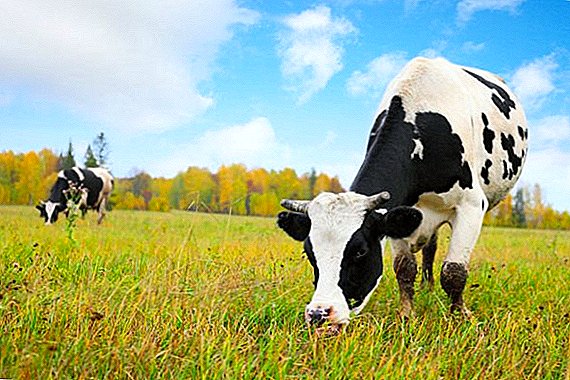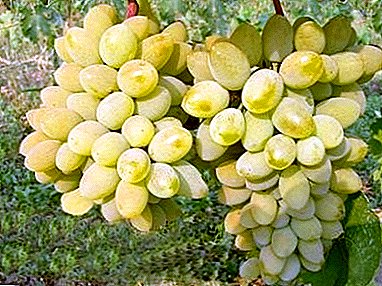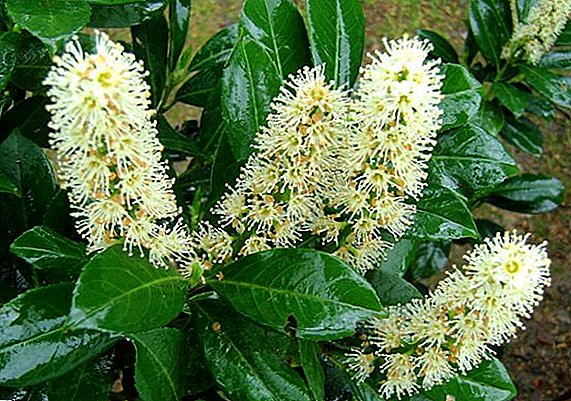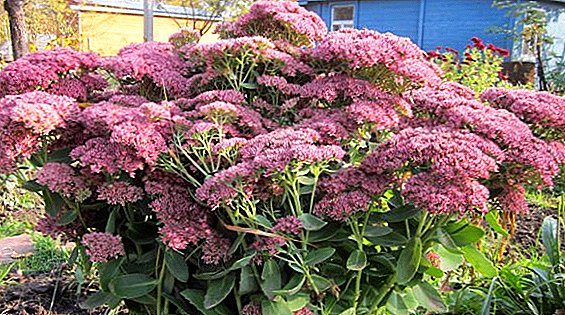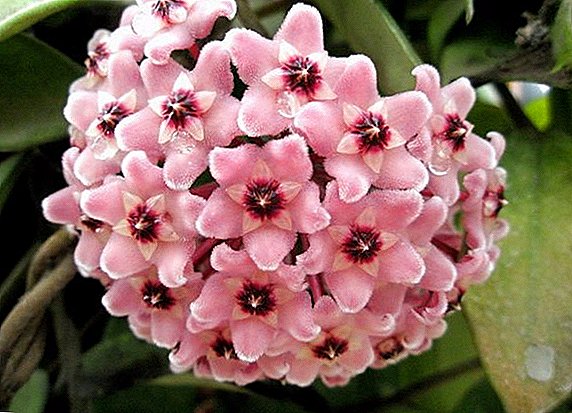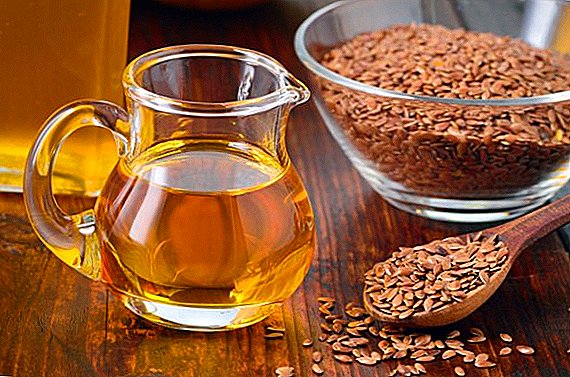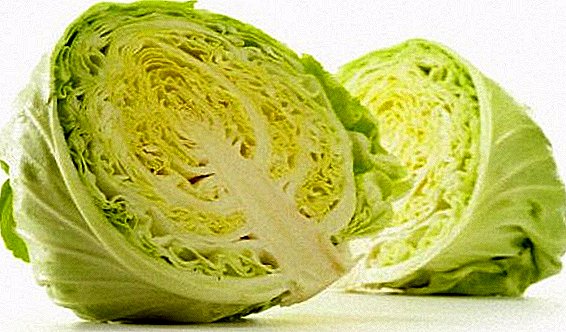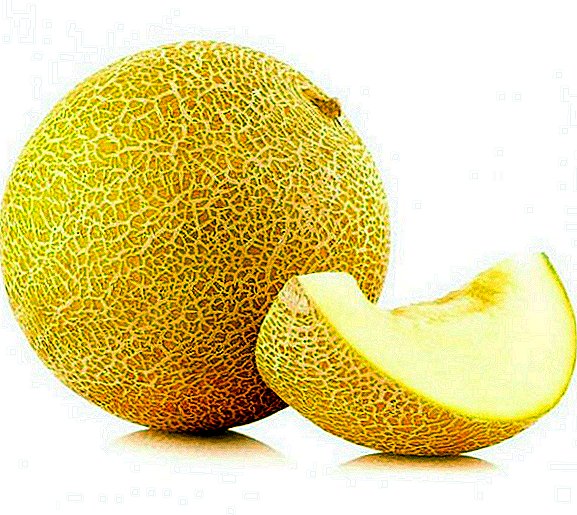 Juicy, tasty and incredibly fragrant melon is one of the most beloved delicacies on the dinner table in late summer and early autumn. Sweet pulp is used both in raw form and as a component for salads, fruit drinks, baking, etc.
Juicy, tasty and incredibly fragrant melon is one of the most beloved delicacies on the dinner table in late summer and early autumn. Sweet pulp is used both in raw form and as a component for salads, fruit drinks, baking, etc.
In addition to its excellent taste, melon has a mass of useful substances that are widely used in traditional medicine and cosmetology.
Melon is a berry, fruit or vegetable: description
Melon is a climbing plant of the Pumpkin family, a genus of Cucumbers, that is, is a melon crop. It refers to annual plants. It has a long stem that spreads along the ground and can reach a length of up to 3 m. On the stem there are multiple shoots, one of which is considered the main one. The total length of all shoots can reach 30 m.
The culture has a rather impressive, branched root system, which goes into the ground at 2-2.5 m. The bulk of the roots is located in the upper part of the ground.
You will be interested to learn about the most popular varieties of Ukrainian melons, the secrets of growing and how to combat diseases and pests of melons.
Melon leaves have, depending on the variety, a different shape: dentate, angular, oval, round, heart-shaped. Their color can vary from dark green to light green. The flowers of the plant are of three types: male, female, bisexual. They are distinguished by a bowl-shaped form, with five fused petals, yellow in color.  The fruit is a multi-seed oval pumpkin, of light yellow, yellow, white or olive color, depending on the variety, with a rough surface.
The fruit is a multi-seed oval pumpkin, of light yellow, yellow, white or olive color, depending on the variety, with a rough surface.
Melon weight - from 1 to 20 kg. Its flesh has a pleasant, sweetish taste, due to which the melon is often called fruit. So what is it: berry, fruit or vegetable?
Answering this question, one should take into account not only the taste of the fruit, but also the conditions of its growth. Fruits are plants that can be found on trees or bushes, berries - on bushes and on the ground. From this point of view, the melon belongs to the berries.
Did you know? Melon, watermelon and cucumber in their structure resemble berries, but differ in larger size and a large number of seeds. They are representatives of Pumpkin and belong to the false berries.
On the other hand, it is very logical to consider the fruit a vegetable, because the melon has a long stem, has an undeniable relationship to cucumbers, pumpkin and grows like a traditional herb.
However, biologists agree that the melon is the fruit of melon crops, is an atypical berry or a false berry. That is the name stuck to her in the botany.
Spread
Numerous kinds of melons are widespread in many countries where a warm and dry climate prevails. False berry grows in the expanses of Central and Asia Minor, in Uzbekistan, Turkmenistan, China, Iran, Moldova, in the southern regions of Europe.  In the Russian Federation, mainly early-growing varieties are grown, which have taken root well in the southern regions of Astrakhan and Saratov regions. On the territory of the post-Soviet countries, the most popular type of melon has become a collective farmer.
In the Russian Federation, mainly early-growing varieties are grown, which have taken root well in the southern regions of Astrakhan and Saratov regions. On the territory of the post-Soviet countries, the most popular type of melon has become a collective farmer.
Melon has a huge number of varieties and hybrids, learn how to grow a hybrid of melon and cucumber - cucumber and pepino - melon pear.
Nutritional value of "collective farmers"
This variety of melons can be grown both in greenhouses and in the open field. It is not intended for long storage, but is resistant to temperature changes, excellent transportability, amazing taste and high nutritional value.
Vitamin and mineral composition of the fruit is represented by the following elements:
- vitamin C: helps to strengthen the immune system, increase the protective functions of the body, combats malaise and weakness;
- vitamin A: normalizes metabolic processes, accelerates the process of regeneration of skin cells, contributes to the rejuvenation of the body;
- B vitamins (B1, B2, B3): take part in protein synthesis, stabilize the nervous system, improve the functioning of the cardiovascular system, are responsible for energy production;
- folic acid: participates in blood formation, helps relieve tension and normalize the state of the body during menopause, ensures the normal development of the fetus during pregnancy;
- potassium: increases brain activity, normalizes acid-base balance, helps relieve tension and fatigue, quickly restore strength after severe mental and physical exertion;
- sodium: maintains a healthy state of the body, is involved in the transport of amino acids;
- phosphorus: participates in almost all chemical processes occurring in the body, helps maintain acid-base balance, ensures normal growth of bone and dental tissues;
- calcium: ensures the development of bone tissue, normalizes the work of the muscular system, strengthens blood vessels;
- magnesium: normalizes the nervous system, fights fatigue and stress, improves tone, strengthens the walls of blood vessels.
 Pumpkin in small amounts also contains zinc, copper, manganese, iron and iodine.
Pumpkin in small amounts also contains zinc, copper, manganese, iron and iodine.The caloric content of raw fruit is 33 kcal per 100 g, where BJU is given:
- proteins - 0.6 g;
- fats - 0.3 g;
- carbohydrates - 7.4 g
Did you know? The calorie content of the dried product is one hundred times higher than the raw berries. So, per 100 g accounted for 333 kcal. Dried melon, in most cases, is used as a dessert. Those who struggle with extra pounds, such a dessert is better to exclude from your diet.
Melon application
A wide range of useful components in the composition of the melon allows you to use it in many areas of human activity.
In medicine
The high content of potassium and magnesium in the "collective farm" contributes to the fact that it is often used to treat and prevent diseases of the cardiovascular system.
It is one of the main components in therapeutic and dietary nutrition, as it allows:
- relieve constipation and improve the work of the digestive system;
- prevent the development of anemia;
- improve the functioning of the kidneys, liver;
- alleviate the condition in urolithiasis and gallstone diseases.
The seeds of the fetus are used to treat problems of male potency, they improve the functioning of the reproductive organs, and activate male power.  Women melon helps with pregnancy and menopause.
Women melon helps with pregnancy and menopause.
Read what is useful for women: plum, sunflower seeds, persimmon, viburnum red, walnuts, pine nuts and Brazil nuts.
In modern medicine, the false berry is used to clean the intestines. Pumpkin fibers excrete radionuclides, toxins, heavy metal salts and other harmful substances.
Since lycopene, a substance that blocks the development of cancer cells, is present in the product, it is used to prevent oncological diseases.
In cosmetology
The main component of the melon is beta-carotene, which allows you to restore the natural color of the skin, fights wrinkles and premature aging, and helps preserve the health of hair and nails.
Facial masks from the pulp well moisturize and nourish the skin, fight dryness and peeling, eliminate inflammation, refresh and cleanse the skin, prevent the formation of wrinkles.  In cosmetology, the product is also used for removing pigment spots and freckles. The “collective farmer” is widely used to eliminate hair problems: to make them shine, strengthen the bulbs, and fight dandruff.
In cosmetology, the product is also used for removing pigment spots and freckles. The “collective farmer” is widely used to eliminate hair problems: to make them shine, strengthen the bulbs, and fight dandruff.
In cooking
Ripe berry has excellent taste and juiciness, which allows it to be used as an independent product or ingredient for other dishes. It is dried, frozen, dried, prepared a variety of jams, jams, candied fruits. Berry is very popular in cocktails, juices, liqueurs, as a filler for ice cream.
For example, in the East, dried pumpkin is an indispensable treat during tea drinking. In the Mediterranean countries, fresh produce is served along with boiled pork, ham, ham and shrimps. In Italy, the fruit is savored in a pair with various cheeses, especially mozzarella.
Important! When eating melon raw, you must follow an important rule: it is recommended to eat it 2-3 hours after eating, otherwise digestive problems may occur. It is strictly forbidden to drink a treat with water.
Melon is added to meat or fruit salads, they make desserts and pastries from it.
Outdoor cultivation
The variety "Kolkhoznitsa" is very fond of gardeners, because it is extremely easy to maintain, has a high resistance to low temperatures and allows you to achieve a rich harvest.
To get good, sweet and juicy fruits, you need to know some features of the cultivation of "collective farmers". 
Features of growing
When planting a melon should be borne in mind that for its comfortable growth requires a lot of free space and good lighting. Between each hole there should be a distance of 80-100 cm. When choosing a place for a bed, it is better to give preference to solar areas that are protected from the cold.
Melon loves nutritious land, so it is recommended to feed the soil with mineral fertilizers, humus, to give it looseness, adding a little river sand.
In the spring, potash fertilizers are applied to the soil, fed with phosphorus.
We recommend that you read how to improve soil fertility.
Preparing for planting seeds
An important step in planting a melon is the proper preparation of seeds.
You can use both purchased seeds and grown independently. When choosing raw materials from the store, preference should be given to those that are larger than the rest. Before sowing, fill them with water, and remove all that have surfaced. Only full-weighted seeds need to be sown, which have sunk to the bottom.
Seed preparation involves the following: it is recommended to dip the seeds in warm water (about +35 ° C) and keep them at room temperature. After a day, the seeds need to be wrapped in a dry towel and put into the fridge for 20 hours. Such "hardened" seeds are fully prepared for planting. 
Growing seedlings
After "hardening" the seeds are planted in the ground for the formation of seedlings. Disposable plastic cups, which are filled with soil saturated with peat, ash and sand, in a ratio of 9: 1: 1 (per 10 l of soil mixture) are perfectly suitable as a container for future sprouts.
You can use ready-made peat cups, which in the future will make it possible to protect the root system from damage when disembarking on open ground.
The landing process consists of several stages:
- 2-3 days before the intended landing, the seeds should be removed from the refrigerator, put in a wet towel, put in a warm place.
- Seeds are planted in containers of 2 pieces, to a depth of 5 cm.
- The containers are shifted to a warm place, with a temperature not lower than +20 ° С during the day and + 15 ° С at night.
- A week later, the first shoots will begin to make their way. After three full leaflets appear on them, the seedlings should be pinched so that side shoots appear.
- To protect the seedlings from the "black leg", it is necessary to provide regular moderate moisture and sprinkle the soil near the stem with sand.
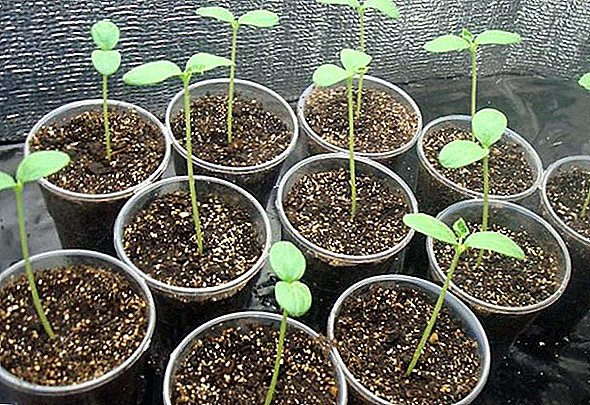
Landing
Planted seedlings in the previously prepared, energized, well loosened soil. Small holes should be made in the ground, the distance between which should be at least 80 cm. Since melon belongs to heat-loving plants, it should be planted during the period when frost is not expected exactly, otherwise the plant will die.
Seedlings gently together with the soil pull out of the peat cup or planted directly in it in the prepared holes. Pre-pour a small amount of water into the wells, add humus. Plants are planted in such a way that a part of an earthen coma can be seen above the ground level. Then the sprouts are watered and covered with soil, not much tamping.
Experienced gardeners advise in the first two weeks after planting to provide seedlings shadow. To do this, construct a special protection. 
Peculiarities of care
Since May may experience sharp drops between day and night temperatures, it is best to cover the shoots with plastic bottles or PVC film. Already at the end of May, thermal protection can be removed, and the plant will not need additional measures against low temperatures.
Melon - moisture-loving culture and requires regular watering. On hot days, you should provide her with maximum moisture. The interval between irrigations is 2 days. For a young plant, a sufficient amount of water is at least 1.5 liters, for an adult - 3-3.5 liters.
Important! Watering pumpkin need to be separated with water from a watering can. Inaccurate, intensive moistening with a hose can damage the fragile, delicate, on the surface, root system.
During ripening, the fetus may tear off from the mother plant. To avoid this, it is recommended to place the false berry in a net or plastic container, hang it on a special support.
Harvesting and storage
"Collective farm" refers to the early varieties, so after 2 months, you can harvest. It is very important not to give mature fruits to remain on the ground for a long time, as they begin to deteriorate and rot.  Pumpkin maturity is determined by the color of the peel: as soon as it acquires a yellow or dark yellow shade, the fruit is ready for harvest.
Pumpkin maturity is determined by the color of the peel: as soon as it acquires a yellow or dark yellow shade, the fruit is ready for harvest.
In addition, the place where the flower was, becomes softer, making it easy to separate the berry from the stem.
Harvested melons are stored in a dry, well-ventilated place, at room temperature, separate from other vegetables or fruits. Immature fruits are cleaned in a dark, dry and warm room. The best solution is to store melons in the cellar, in a separate compartment, at a temperature of + 8-10 ° C and about 60% humidity.
It will be useful for you to read what blanks can be made from a melon.
High humidity will cause rotting of the fruit, and low humidity - their drying out. Care must be taken to ensure that pumpkins do not touch each other. You can place the berries on sawdust, in boxes of sand or hang.
If the tail of the fetus has disappeared, the place where it was located, you need to pour paraffin, which protects against infection. A monthly visual inspection of the fruit should be carried out and the spoiled ones removed. 
Feedback from network users
The plant itself with a thin stem, well lagged in length. Fruits grow spherical, yellow - orange color, smooth to the touch. When you cut the fruit, we see white flesh, it tastes very sweet and crunches, and how it smells ... I just can't convey to you the aroma of a ripe melon. Very tasty fruit!
After emergence, you need to wait about 80 to 90 days and the fruits will already ripen. My husband and I collect up to 5 kg from a single plant (wicker bush).
Harvest enough for the whole family and close in jars for snacks for the winter. Sometimes we even sell and treat friends and acquaintances! These are the good seeds I once bought! I am still grateful to the woman who suggested in the market to buy me these seeds.


"Kolkhoznitsa" - fragrant, healthy, tasty melon, which is an indispensable delicacy for adults and children in the summer season. It does not require a special approach when growing, resistant to temperature changes, unpretentious in care. With the observance of some simple rules of its disembarkation, it is able to please gardeners with a rich harvest and sunny, honey fruits.



